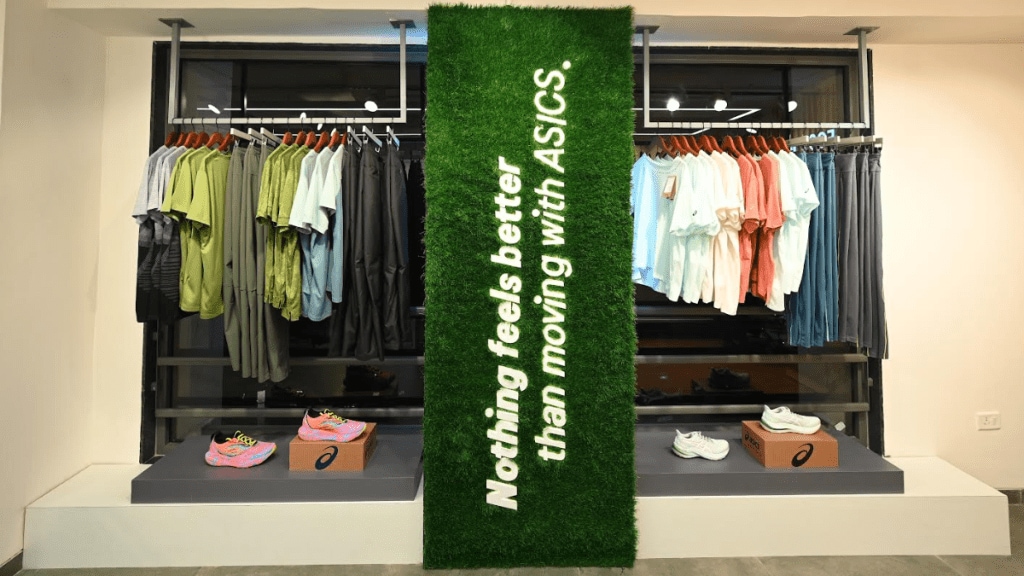In its first seven years, Japanese sports performance brand ASICS established its presence in India at a steady clip. It was happy to open 11-12 retail stores every year and ended up manufacturing more than 20% of the products that it sells in the country locally.
Then 2023 happened. It launched 17 stores in quick succession and reached the magic figure of 100 stores.
This year and next will be the years of fartlek run for ASICS. It will add 50 stores — that’s 25 a year — and will manufacture 30% of its products locally. The idea is to make India its global sourcing hub.
That’s going to be a tough call, going by the sheer competition. Big daddies of the game Adidas, Reebok, Nike, Under Armour, Puma, and Sketchers have all been in the country for years and are unlikely to cede space. Then there are lower-priced local brands Sparx, Power, Campus, and Lancer that have loyal following.
ASICS is no pushover though, with a presence in more than 60 countries. It has cracked these markets using smart technology, clever pricing and marketing the overall idea of “sports” as a lifestyle choice rather than its shoes alone.
No doubt India offers a big market. According to Statista, the sports and athleisure retail market in India was valued at Rs 158 billion in FY21 and is estimated to grow to Rs 402 billion by FY25. Footwear made up the largest chunk of the market during the period, amounting to about Rs 90 billion in 2021, and is projected to grow to about Rs 170 billion by 2025.
In FY 2023, its revenue from sales grew 36% to Rs 341 crore, according to data accessed by business intelligence platform Tofler.
ASICS is also mindful of the opportunity tier-2 and -3 markets present. The company intends to have 70% of the new stores in tier-2 and -3 cities and the rest in tier-1. What it hopes will work in the brand’s favour is that running, which is its core strength, is a common sporting activity in small-town India.
The company has also segregated its products in terms of target markets. The average price point of its products is lower in the tier-2 and -3 cities than in tier-1. For its high-affinity customers, the entry price point of ASICS’ products starts from Rs 8,000 and goes up to Rs 22,000; whereas in tier-2 and 3 cities, the entry price point is around Rs 4,999, and it goes up to Rs 16,999. That might still be out of reach for a huge segment of buyers in these markets. Samit Sinha, managing partner, Alchemist Brand Consulting, says, “The brand will have to value-engineer or launch a lower-priced range if it wants large volumes in tier-2 and 3 markets.”
Jog to race
While all of its stores at present are franchisee-owned, ASICS is planning to open its first brand-owned store by 2026 and to comply with the single-brand FDI retail trading policy, it has also increased local sourcing. At present, it is at 29%, which will touch 30% sooner than later.
Nisha Sampath, managing partner, Bright Angles Consulting, notes that while high-performance footwear is increasingly sold online, store presence and experiential selling are very important in India in premium categories. “In a market where brand recall is dominated by Nike, Adidas and Puma, stores can become a valuable marketing tool for ASICS to demonstrate its USP, engage customers, and create memorability and talk value. Innovative selling of the ASICS technology becomes important given the price premium they charge,” she adds.
Its digital business, which includes D2C e-commerce marketplaces and wholesale e-commerce, contributes over 30% to its sales. Rajat Khurana, MD, ASICS India and South Asia, says, “We have seen healthy sales growth not only via physical retail but through e-commerce as well.”
To differentiate its retail experience, the brand is dropping technology elements such as shoe talkers (custom hardware and software that analyses and responds in real time to the movements of users), foot IDs, and digital screens. “Our investment in the store reinforces that the retail buyer is currently expecting a unique shopping experience across stores and expects it to provide him the same kind of experience that online provides. While online is more about convenience, the retail store is more about offering a personalised approach,” Khurana adds.

